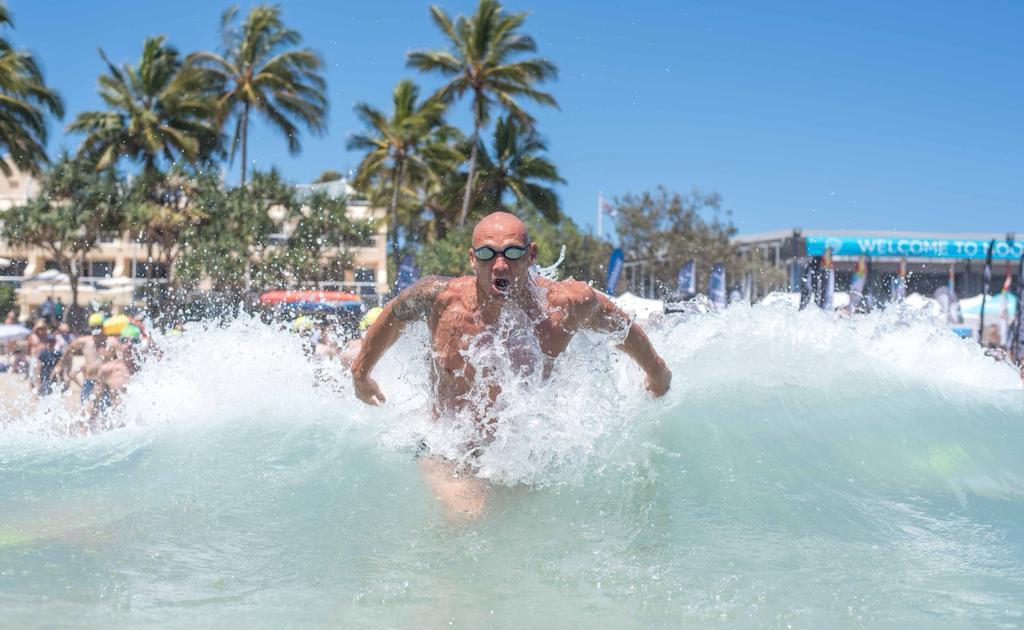Open Water Swimming Fundamentals

Most swimmers will do almost all of their training in the controlled environment of the pool, maybe doing one or two open water practices before their race. Unfortunately, this is likely to put you at a distinct disadvantage and make your race day experience quite unpleasant.
Preparing for Race Day
In order to feel like you are able to perform to your full potential on race day, and add an exciting new element to your swim training, it often pays to embrace open water swimming with a bit more vigour.
Unfortunately, nothing will prepare you for swimming in open water like actually swimming in open water! There’s not getting away from it, to avoid the ‘shock’ of that mass start in murky, cold water, you need to condition your body and mind by getting in the water as often as possible. If you live near somewhere where you can get a good open water swim session, try and replace one pool session each week with an open water session. If possible try and match these swims to your ‘A’ race swim conditions. For example, if you’re a race is an Ironman with a beach start, try and swim in salt water as much as possible.
Unfortunately, having a clear blue lake or beach nearby is a luxury only a few of us have. So what do you do if you live in a city? Or somewhere where it’s really cold?
Though you will never really match the unique challenges (and enjoyment) of swimming in open water in an artificial pool, there are things you can do to prepare yourself.
You could start by trying these useful drills:

1. Swim Blind
One of the first things that will hit you when you get into the open water is how little you can see. With no lane barriers or markings on the pool floor to guide you, you will find it difficult to orient yourself and swim straight. This is obviously a big problem as, even with the most economical stroke in the world, if you aren’t swimming in the right direction, you’re going to be fighting a losing battle.
To stop yourself zig-zagging across the course on race day you need to get used to swimming as straight as possible – even when you can’t see anything. Try doing full 25m lengths without opening your eyes. Though this won’t quite prepare you for not being able to see your arms as you swim, it will help with your ‘feel’ and give you a better chance of staying on track on race day.

2. Sighting
A skill that’s quite unique to open water swimming is sighting. Even if you can swim in a perfectly straight line with your eyes shut, you’ll still need to figure out where the marker buoys are and how your competitors are doing. You can prepare yourself for this quite well in a pool. Just pick a point on the side of the pool. Maybe it’s a coach, your water bottle or fire exit. Whichever you choose, set yourself the challenge of ‘sighting’ it 2 or 3 times for each length you do. Though you might feel a bit silly doing this when the pool is full of other swimmers, you’ll be glad you did it when race day comes around.

3. Swimming with Others
Do you get nervous when you need to swim past someone in a swimming lane? Well, get 3 of you swimming side by side in a standard lane and you’ll have some idea of what it can be like at the start of an open water tri start. In order to make sure you don’t panic when this happens on race day it’s important that you are used to swimming in close proximity to other swimmers.
Start by simply swimming with friends. Take it in turns to swim on each other’s heels. Then, do a few lengths with you both swimming side by side. It’s inevitable that during this exercise you’ll make contact with each other. By practicing this in the pool you will familiarise yourself with this sensation so that, when if happens on race day (because it will) you will simply be able to carry on with what you’re doing.
Don’t make the mistake of underestimating the differences between open water swimming and swimming in a pool. That’s a sure way to ensure you have an unpleasant shock on race day. To make sure you can handle everything the open water swim throws at you, make sure you prepare yourself for all the challenges presented by the open water swim – not just the fitness element.
With the World Series Swims well underway and with 3 events still left on this years calendar in the Mooloolaba Mile (March 21), Cooly Classic (April 18) and Swim the Gold Coast (May 29) it's a perfect opportunity to hone these open water fundamentals no matter if you are a novice and having a crack at your first ever ocean swim or an experienced open water swimmer.
(images provided by @surfshotsnoosa)